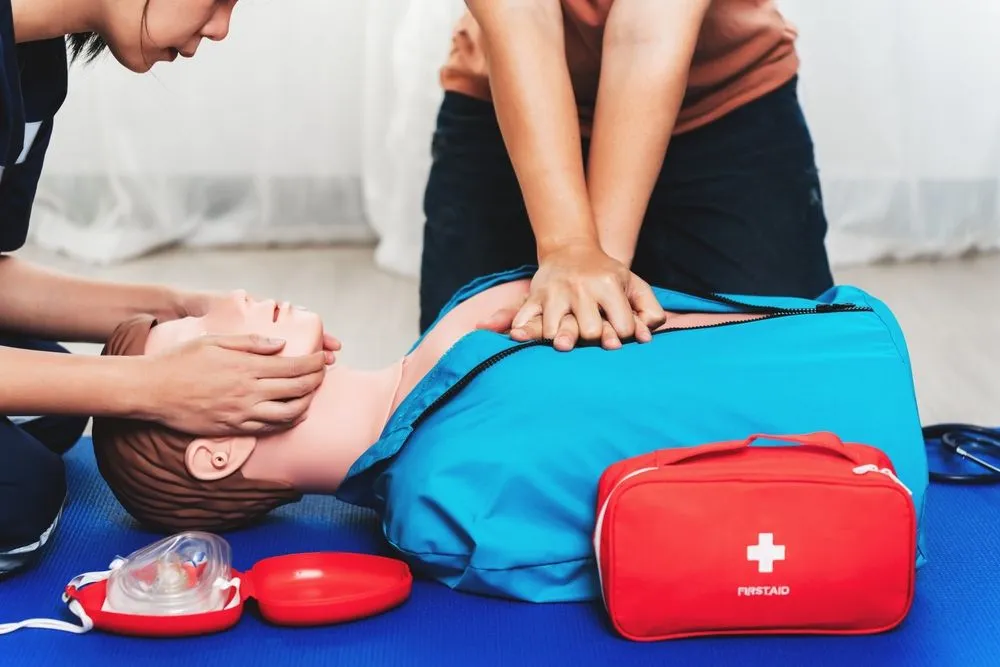Heat stroke is a life-threatening condition that affects the body’s cooling system during heat waves, leading to high temperatures. It is fatal if it is not treated. As a severe condition, it can lead to a variety of illnesses and sometimes even death. We aim to provide information on heatstroke, its signs, how to manage it, the difference between heat stroke and sunstroke, and measures for preventing it.
What is Heatstroke?
Heat stroke, or sunstroke, is among the most serious heat illnesses a person can experience. It happens when the thermoregulation process in the body is overburdened, and the body temperature exceeds 104°F (40°C). Heatstroke is often precipitated by heat, sun, diminished water intake, or heavy activities in a hot environment.
Symptoms of Heatstroke
Symptoms of heatstroke can vary, but some common signs to look for include:
- High Body Temperature: A body temperature above 104°F (40°C) is the most noticeable symptom.
- Confusion or Disorientation: Victims may become confused or delirious due to brain dysfunction caused by overheating.
- Skin Changes: The skin may appear hot, dry, or flushed.
- Rapid Heart Rate: The heart rate may increase as the body tries to cool itself.
- Nausea or Vomiting: Heat stroke can cause digestive distress, including nausea and vomiting.
- Loss of Consciousness: In severe cases, the person may faint or become unconscious. Placing an unconscious person in the recovery position can ensure safety until medical help arrives.
So, what six things should you look for to identify heatstroke? As the most common signs, look for high body temperature, confusion, dry skin, rapid pulse, nausea, and loss of consciousness.
Can You Get Heat Stroke Indoors?
It is standard for individuals to suffer from heat stroke while indoors. Heat stroke may involve risking the health of home-based individuals by exposure to bad weather outside. Still, sometimes, depending on the interior, heat illnesses can occur because of heat inside. It worsens in areas such as poorly ventilated structures, closed rooms, or when temperatures are high without necessary measures to reduce the heat.
How to Treat Heatstroke?
Heat stroke treatments should be initiated as soon as symptoms appear. Immediate action is critical for preventing complications. Here’s how to treat heat stroke:
- Move to a Cooler Environment: Immediately get the person to a shaded or air-conditioned area.
- Cool the Body: Use cool water, ice packs, or baths to reduce body temperature. Apply ice to areas like the neck, armpits, and groin.
- Hydrate: Give the person cool water if they are conscious and can swallow. Avoid sugary or caffeinated drinks, as they can worsen dehydration.
- Seek Medical Attention: If the person’s condition does not improve quickly or if they lose consciousness, call emergency services right away.
The sooner you can effectively administer treatment for heat stroke, the better the chances of recovery.

Stay Prepared and Save Lives!
Don't wait until it's too late-learn how to recognise and treat heat stroke with confidence. Our First Aid courses offer complete training to help you handle critical situations. Whether you want to improve your skills or workplace safety, these courses help build confidence and expertise. View our Emergency First Aid at Work (EFAW) and Level 3 First Aid at Work courses. These courses meet the UK legal requirements and help you keep people safe.
How to Treat Sunstroke?
Heat collapse, or sunstroke, as it is sometimes called, should be treated in the same way as heatstroke. Measures to be taken include taking the person to a cool area, cooling the body, giving fluids, and going to the hospital if necessary. However, if appropriate action is taken as soon as the symptoms appear, further progression and results will be more favourable.
How to Cure Heatstroke?
Unfortunately, heat stroke has no ” cure, ” but this condition can be treated effectively to bring the body temperature back to normal. The goal is to reduce the body temperature in the least amount of time possible and avoid other complications from arising. In all heat stroke interventions, the goals should always be to cool the body, replace fluids, and seek medical attention.
Prevention is Key
Preventing heat stroke involves understanding its risk factors and taking precautions, especially during hot weather. Here are a few strategies to avoid heatstroke:
- Stay Hydrated: Drink plenty of fluids to avoid dehydration, especially in hot weather.
- Wear Light Clothing: Light, breathable clothing helps your body stay cool.
- Limit Outdoor Activities: Avoid strenuous outdoor activities during peak heat, typically between 10 a.m. and 4 p.m.
- Use Fans or Air Conditioning: If you must stay indoors during a heatwave, ensure you can access fans or air conditioning to keep your environment cool.
Conclusion
Heat stroke is a dangerous and potentially fatal symptom of heat illness, but it is avoidable if proper management is undertaken. Learning how to check the signs of heatstroke, knowing how to proceed in the case of heat stroke, and understanding what sunstroke is will make you better prepared for an emergency. If the proper measures are taken, the victim and others can easily avoid heat-related complications. It is very important to know that heat stroke is a medical emergency-call for help immediately if needed. Please remember to remain safe, be safe, and be prepared.




